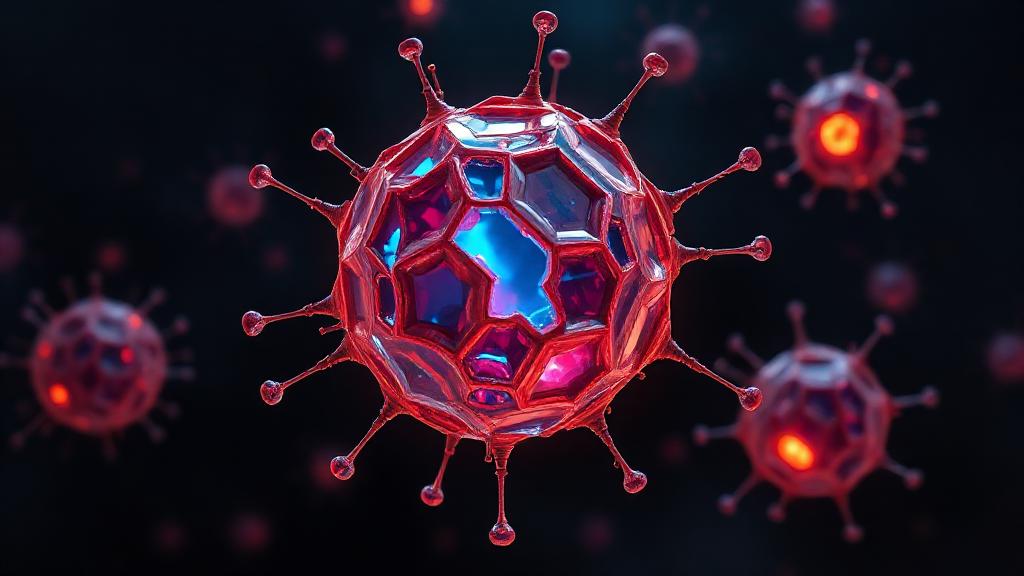Filters
Host (768597)
Bovine (1090)Canine (20)Cat (408)Chicken (1642)Cod (2)Cow (333)Crab (15)Dog (524)Dolphin (2)Duck (13)E Coli (239129)Equine (7)Feline (1864)Ferret (306)Fish (125)Frog (55)Goat (36847)Guinea Pig (752)Hamster (1376)Horse (903)Insect (2053)Mammalian (512)Mice (6)Monkey (601)Mouse (96266)Pig (197)Porcine (70)Rabbit (358709)Rat (11723)Ray (55)Salamander (4)Salmon (15)Shark (3)Sheep (4247)Snake (4)Swine (301)Turkey (57)Whale (3)Yeast (5336)Zebrafish (3022)Isotype (156643)
IgA (13624)IgA1 (941)IgA2 (318)IgD (1949)IgE (5594)IgG (87187)IgG1 (16733)IgG2 (1329)IgG3 (2719)IgG4 (1689)IgM (22029)IgY (2531)Label (239340)
AF488 (2465)AF594 (662)AF647 (2324)ALEXA (11546)ALEXA FLUOR 350 (255)ALEXA FLUOR 405 (260)ALEXA FLUOR 488 (672)ALEXA FLUOR 532 (260)ALEXA FLUOR 555 (274)ALEXA FLUOR 568 (253)ALEXA FLUOR 594 (299)ALEXA FLUOR 633 (262)ALEXA FLUOR 647 (607)ALEXA FLUOR 660 (252)ALEXA FLUOR 680 (422)ALEXA FLUOR 700 (2)ALEXA FLUOR 750 (414)ALEXA FLUOR 790 (215)Alkaline Phosphatase (825)Allophycocyanin (32)ALP (387)AMCA (80)AP (1160)APC (15217)APC C750 (13)Apc Cy7 (1248)ATTO 390 (3)ATTO 488 (6)ATTO 550 (1)ATTO 594 (5)ATTO 647N (4)AVI (53)Beads (225)Beta Gal (2)BgG (1)BIMA (6)Biotin (27817)Biotinylated (1810)Blue (708)BSA (878)BTG (46)C Terminal (688)CF Blue (19)Colloidal (22)Conjugated (29246)Cy (163)Cy3 (390)Cy5 (2041)Cy5 5 (2469)Cy5 PE (1)Cy7 (3638)Dual (170)DY549 (3)DY649 (3)Dye (1)DyLight (1430)DyLight 405 (7)DyLight 488 (216)DyLight 549 (17)DyLight 594 (84)DyLight 649 (3)DyLight 650 (35)DyLight 680 (17)DyLight 800 (21)Fam (5)Fc Tag (8)FITC (30165)Flag (208)Fluorescent (146)GFP (563)GFP Tag (164)Glucose Oxidase (59)Gold (511)Green (580)GST (711)GST Tag (315)HA Tag (430)His (619)His Tag (492)Horseradish (550)HRP (12960)HSA (249)iFluor (16571)Isoform b (31)KLH (88)Luciferase (105)Magnetic (254)MBP (338)MBP Tag (87)Myc Tag (398)OC 515 (1)Orange (78)OVA (104)Pacific Blue (213)Particle (64)PE (33571)PerCP (8438)Peroxidase (1380)POD (11)Poly Hrp (92)Poly Hrp40 (13)Poly Hrp80 (3)Puro (32)Red (2440)RFP Tag (63)Rhodamine (607)RPE (910)S Tag (194)SCF (184)SPRD (351)Streptavidin (55)SureLight (77)T7 Tag (97)Tag (4710)Texas (1249)Texas Red (1231)Triple (10)TRITC (1401)TRX tag (87)Unconjugated (2110)Unlabeled (218)Yellow (84)Pathogen (489613)
Adenovirus (8665)AIV (315)Bordetella (25035)Borrelia (18281)Candida (17817)Chikungunya (638)Chlamydia (17650)CMV (121394)Coronavirus (5948)Coxsackie (854)Dengue (2868)EBV (1510)Echovirus (215)Enterovirus (677)Hantavirus (254)HAV (905)HBV (2095)HHV (873)HIV (7865)hMPV (300)HSV (2356)HTLV (634)Influenza (22132)Isolate (1208)KSHV (396)Lentivirus (3755)Lineage (3025)Lysate (127759)Marek (93)Measles (1163)Parainfluenza (1681)Poliovirus (3030)Poxvirus (74)Rabies (1519)Reovirus (527)Retrovirus (1069)Rhinovirus (507)Rotavirus (5346)RSV (1781)Rubella (1070)SIV (277)Strain (67790)Vaccinia (7233)VZV (666)WNV (363)Species (2982223)
Alligator (10)Bovine (159546)Canine (120648)Cat (13082)Chicken (113771)Cod (1)Cow (2030)Dog (12745)Dolphin (21)Duck (9567)Equine (2004)Feline (996)Ferret (259)Fish (12797)Frog (1)Goat (90451)Guinea Pig (87888)Hamster (36959)Horse (41226)Human (955186)Insect (653)Lemur (119)Lizard (24)Monkey (110914)Mouse (470743)Pig (26204)Porcine (131703)Rabbit (127597)Rat (347841)Ray (442)Salmon (348)Seal (8)Shark (29)Sheep (104984)Snake (12)Swine (511)Toad (4)Turkey (244)Turtle (75)Whale (45)Zebrafish (535)Technique (5597646)
Activation (170393)Activity (10733)Affinity (44631)Agarose (2604)Aggregation (199)Antigen (135358)Apoptosis (27447)Array (2022)Blocking (71767)Blood (8528)Blot (10966)ChiP (815)Chromatin (6286)Colorimetric (9913)Control (80065)Culture (3218)Cytometry (5481)Depletion (54)DNA (172449)Dot (233)EIA (1039)Electron (6275)Electrophoresis (254)Elispot (1294)Enzymes (52671)Exosome (4280)Extract (1090)Fab (2230)FACS (43)FC (80929)Flow (6666)Fluorometric (1407)Formalin (97)Frozen (2671)Functional (708)Gel (2484)HTS (136)IF (12906)IHC (16566)Immunoassay (1589)Immunofluorescence (4119)Immunohistochemistry (72)Immunoprecipitation (68)intracellular (5602)IP (2840)iPSC (259)Isotype (8791)Lateral (1585)Lenti (319416)Light (37250)Microarray (47)MicroRNA (4834)Microscopy (52)miRNA (88044)Monoclonal (516109)Multi (3844)Multiplex (302)Negative (4261)PAGE (2520)Panel (1520)Paraffin (2587)PBS (20270)PCR (9)Peptide (276160)PerCP (13759)Polyclonal (2762994)Positive (6335)Precipitation (61)Premix (130)Primers (3467)Probe (2627)Profile (229)Pure (7808)Purification (15)Purified (78305)Real Time (3042)Resin (2955)Reverse (2435)RIA (460)RNAi (17)Rox (1022)RT PCR (6608)Sample (2667)SDS (1527)Section (2895)Separation (86)Sequencing (122)Shift (22)siRNA (319447)Standard (42468)Sterile (10170)Strip (1863)Taq (2)Tip (1176)Tissue (42812)Tube (3306)Vitro (3577)Vivo (981)WB (2515)Western Blot (10683)Tissue (2015946)
Adenocarcinoma (1075)Adipose (3459)Adrenal (657)Adult (4883)Amniotic (65)Animal (2447)Aorta (436)Appendix (89)Array (2022)Ascites (4377)Bile Duct (20)Bladder (1672)Blood (8528)Bone (27330)Brain (31189)Breast (10917)Calvaria (28)Carcinoma (13493)cDNA (58547)Cell (413805)Cellular (9357)Cerebellum (700)Cervix (232)Child (1)Choroid (19)Colon (3911)Connective (3601)Contaminant (3)Control (80065)Cord (661)Corpus (148)Cortex (698)Dendritic (1849)Diseased (265)Donor (1360)Duct (861)Duodenum (643)Embryo (425)Embryonic (4583)Endometrium (463)Endothelium (1424)Epidermis (166)Epithelium (4221)Esophagus (716)Exosome (4280)Eye (2033)Female (475)Frozen (2671)Gallbladder (155)Genital (5)Gland (3436)Granulocyte (8981)Heart (6850)Hela (413)Hippocampus (325)Histiocytic (74)Ileum (201)Insect (4880)Intestine (1944)Isolate (1208)Jejunum (175)Kidney (8075)Langerhans (283)Leukemia (21541)Liver (17340)Lobe (835)Lung (6064)Lymph (1208)Lymphatic (639)lymphocyte (22572)Lymphoma (12782)Lysate (127759)Lysosome (2813)Macrophage (31794)Male (1617)Malignant (1465)Mammary (1985)Mantle (1042)Marrow (2210)Mastocytoma (3)Matched (11710)Medulla (156)Melanoma (15522)Membrane (105772)Metastatic (3574)Mitochondrial (160319)Muscle (37419)Myeloma (748)Myocardium (11)Nerve (6398)Neuronal (17028)Node (1206)Normal (9486)Omentum (10)Ovarian (2509)Ovary (1172)Pair (47185)Pancreas (2843)Panel (1520)Penis (64)Peripheral (1912)Pharynx (122)Pituitary (5411)Placenta (4038)Prostate (9423)Proximal (318)Rectum (316)Region (202210)Retina (956)Salivary (3119)Sarcoma (6946)Section (2895)Serum (24880)Set (167654)Skeletal (13628)Skin (1879)Smooth (7577)Spinal (424)Spleen (2292)Stem (8892)Stomach (925)Stroma (49)Subcutaneous (47)Testis (15393)Thalamus (127)Thoracic (60)Throat (40)Thymus (2986)Thyroid (14121)Tongue (140)Total (10135)Trachea (227)Transformed (175)Tubule (48)Tumor (76921)Umbilical (208)Ureter (73)Urinary (2466)Uterine (303)Uterus (414)Unlocking Microbial Mysteries: A Cutting-Edge Protocol for High-Resolution Single-Cell Bacterial Transcriptomics
This blog presents a groundbreaking high-resolution bacterial single-cell RNA sequencing (scRNA-seq) protocol that overcomes key technical challenges unique to bacteria, such as rigid cell walls, lack of polyadenylated mRNA, and low RNA content. By integrating optimized enzymatic lysis, targeted rRNA depletion, random priming, and microfluidic droplet technology, this method enables detailed transcriptomic analysis at the single-cell level. It opens new possibilities for studying bacterial heterogeneity, antibiotic resistance, pathogenesis, and microbial ecology with unprecedented precision. The blog includes embedded links to authoritative edu and gov sources to support further research.
Genprice
Scientific Publications

Unlocking Microbial Mysteries: A Cutting-Edge Protocol for High-Resolution Single-Cell Bacterial Transcriptomics
Introduction
Advances in single-cell RNA sequencing (scRNA-seq) have reshaped molecular biology by enabling detailed gene expression analysis at the individual cell level. While eukaryotic scRNA-seq is well-established, translating these techniques to bacteria has remained a major technical challenge—until now. A newly developed high-resolution, robust bacterial scRNA-seq protocol overcomes longstanding barriers, offering unprecedented insights into bacterial population heterogeneity, adaptive responses, and pathogenesis mechanisms.
Why Single-Cell RNA Sequencing in Bacteria?
Microbial populations are often phenotypically diverse, even within clonal groups, affecting antibiotic tolerance, virulence, and biofilm formation. Conventional bulk RNA-seq methods average gene expression over millions of cells, masking crucial subpopulation dynamics. As emphasized by the NIH Human Microbiome Project, understanding transcriptional variation at the single-cell level is key for decoding microbial behavior in health and disease.
Major Technical Challenges in Bacterial scRNA-seq
Bacteria present unique obstacles for single-cell transcriptomics:
- Rigid, complex cell envelopes: The bacterial cell wall, composed of peptidoglycan and other polymers, restricts efficient lysis. For example, Gram-positive bacteria have thicker walls than Gram-negative, requiring tailored digestion protocols (CDC Gram-positive/negative differences).
- Lack of polyadenylation: Unlike eukaryotic mRNA, bacterial transcripts typically lack poly(A) tails, preventing standard oligo(dT)-primed reverse transcription (NIH RNA Biology Resources).
- Abundant rRNA: Ribosomal RNA represents over 90% of total bacterial RNA, diluting mRNA signals.
- Low RNA content: Bacterial cells contain significantly less RNA per cell (~0.1 pg) than eukaryotic cells, necessitating sensitive and low-loss RNA capture methods (NCBI RNA Quantification Protocols).
- Small cell size: Bacteria (~1–2 µm) require high-precision microfluidic devices to isolate individual cells without contamination (NIH Microfluidics Initiative).
Detailed Protocol Innovations
This protocol incorporates multiple specialized steps:
1. Optimized Cell Preparation and Fixation
- Culture conditions: Bacterial cultures are grown under tightly controlled environments (e.g., defined media, temperature, antibiotic exposure) to preserve native transcriptional states. Protocols mirror those in EPA Microbial Culture Guidelines.
- Fixation: Cells are fixed with paraformaldehyde (1-4%) or methanol to arrest transcription and stabilize RNA, minimizing artifacts. Fixation timing and conditions follow Cold Spring Harbor Protocols.
2. Cell Wall Permeabilization and Lysis
- Enzymatic digestion: Species-specific cocktails of lysozyme, mutanolysin, and achromopeptidase are applied to digest peptidoglycan efficiently. For Gram-negative bacteria like E. coli, lysozyme (1 mg/mL) incubation at 37°C for 10-15 minutes suffices. Gram-positive bacteria require longer incubation or additional enzymes (Harvard Microbiology Enzymatic Lysis Protocol).
- Chemical permeabilization: Mild detergents (e.g., Tween-20, Triton X-100) enhance membrane disruption without degrading RNA (NIH Detergent Protocols).
- Mechanical lysis integration: In some cases, gentle sonication or freeze-thaw cycles are incorporated to increase lysis efficiency (Johns Hopkins Sonication Protocols).
3. RNA Extraction and Ribosomal RNA Depletion
- Magnetic bead-based extraction: RNA is isolated using silica-coated magnetic beads optimized for low input samples, minimizing RNA loss (NIH RNA Isolation Best Practices).
- Selective rRNA depletion: Targeted probes hybridize to 16S and 23S rRNA sequences, followed by RNase H digestion to remove rRNA selectively. The method is adapted from the Illumina Ribo-Zero Kit with bacterial modifications.
4. cDNA Synthesis
- Random hexamer priming: To capture full-length bacterial transcripts, reverse transcription employs random hexamer primers with SuperScript IV or equivalent high-fidelity reverse transcriptase enzymes (NIH Reverse Transcriptase Protocols).
- Unique Molecular Identifiers (UMIs): Barcoded primers incorporate UMIs to correct PCR amplification bias and quantify transcripts accurately, following best practices outlined by the Broad Institute’s Single-Cell Portal.
5. Microfluidics and Cell Partitioning
- Droplet-based microfluidics: Using platforms such as 10x Genomics Chromium or custom-built microfluidic devices, individual bacteria are encapsulated with barcoded beads in nanoliter droplets. These beads carry primers with cell-specific barcodes enabling downstream transcript assignment (MIT Microfluidics Facility).
- Sorting and quality control: Fluorescence-activated cell sorting (FACS) is employed before encapsulation to enrich live, single cells and exclude debris or doublets (NIH FACS Core).
6. Amplification and Library Preparation
- cDNA amplification: PCR cycles are carefully optimized (typically 18-22 cycles) to balance yield and minimize overamplification artifacts.
- Library construction: Nextera XT or similar transposase-based methods fragment and tag amplified cDNA for Illumina sequencing (NIH Library Prep Protocol).
- Quality assessment: Fragment size and concentration are analyzed by Bioanalyzer or TapeStation systems to confirm library integrity (NIH Sequencing Core Guidelines).
7. Sequencing and Data Analysis
- High-throughput sequencing: Libraries are sequenced on Illumina NovaSeq or NextSeq platforms, generating paired-end reads (e.g., 2x75 bp) to maximize transcript coverage.
- Bioinformatics pipeline: Raw reads undergo demultiplexing, UMI correction, and alignment to reference bacterial genomes using pipelines such as Cell Ranger adapted for bacterial genomes.
- Normalization and clustering: Expression data are normalized to account for technical noise, followed by clustering algorithms (e.g., Louvain, Leiden) to identify transcriptionally distinct subpopulations, as per NIH Single Cell Analysis Program.
Applications and Scientific Impact
This protocol opens avenues for:
- Antibiotic resistance studies: Identification of rare persister cells expressing resistance genes at low frequency, enhancing understanding of treatment failure (CDC Antibiotic Resistance Threats).
- Microbial pathogenesis: Mapping gene expression heterogeneity during infection to reveal virulence regulation and immune evasion strategies (NIAID Pathogenesis Research).
- Environmental microbiology: Dissecting functional diversity in soil and aquatic microbial communities, aiding bioremediation and ecosystem monitoring efforts (EPA Microbial Ecology).
- Synthetic biology: Engineering microbial consortia with tailored expression profiles for industrial biotechnology (DOE Synthetic Biology Initiative).
Future Enhancements and Research Directions
Multi-omics integration: Combining bacterial scRNA-seq with single-cell proteomics and metabolomics will provide holistic views of cellular states (NIH Multi-omics).
Spatial transcriptomics: Incorporation of spatially resolved transcriptomics to understand microbial organization within biofilms and host tissues (Harvard Spatial Omics Lab).
Automation and scalability: Developing fully automated platforms to increase throughput and reproducibility for clinical and environmental applications.
Conclusion
The high-resolution bacterial scRNA-seq protocol described here represents a landmark advancement in microbial genomics, enabling researchers to interrogate bacterial populations at the single-cell level with precision. The protocol's rigorous technical design addresses fundamental bacterial biology challenges, empowering studies that will unravel microbial complexity with far-reaching implications in medicine, ecology, and biotechnology.
Tags
- bacterial scRNA-seq
- single-cell bacterial transcriptomics
- microbial RNA sequencing
- bacterial gene expression
- antibiotic resistance single cell
- microfluidics bacterial sequencing
- rRNA depletion bacteria
- bacterial transcriptome analysis
- bacterial cell wall lysis
- bacterial cDNA synthesis
